Introduction
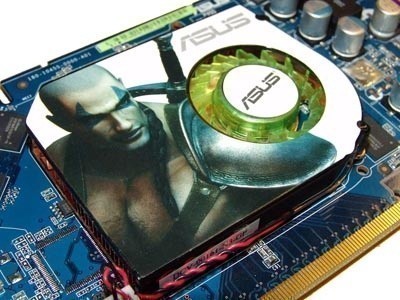
nVidia's GeForce 7950GT - it was a graphics card that didn't get too much attention, and for good reason in all honesty. It is literally just a 512MB variant of the highly popular 7900GT. While this wouldn't be a bad thing considering companies like Palit had already established their 512MB 7900GT with a increased core and memory speed when word of the 7950GT got out, it didn't really WOW many people. It was slower than a 7900GTX and only slightly faster than a 7900GT 256MB, pricing wasn't anything special and in a nutshell caused the card to silently hit the market.
The 7900GT generally caught onto a lot of bad press thanks to the extremely high failure rate from some companies who simply offered too much of an overclock. Cards died from anywhere between one week to three months but on particular brands the failure rate was consistent enough that you couldn't put it down to a bit of bad luck. With the bad press it made sense that nVidia would want to do a bit of a rehash with the highly popular card. The 7900GT became discontinued and the 7950GT took its place, it is actually the highest spec card in the GeForce 7 series line up now with both the 7950GX2 and 7900GTX being also discontinued. If you're after a high-end card and don't have the bucks to spend on the GeForce 8800 series, this is your only option from nVidia.
If you're looking for a bit more out of the box performance then the 7900GS but don't quite have the money for those mean looking 8800 series cards, then the 7950GT might be the card for you. Let's take a look at the ASUS EN version.
The Package
ASUS continuing with the big box fashion we have seen for a while, there is a theme on the box that relates to the game that is included inside. In this case, it's Ghost Recon Advanced Warfighter - not a bad choice.
While we have this huge box information on the front of the box is a bit limited, what we can see thought is that 512MB of DDR-3 memory is on the card, Ghost Recon is included, the card is HDCP compliant and of course is PCI Express.
Turning the box over we have our normal array of extended specifications which include chip features and some more specific ones in regards to what ASUS offer. We also have a few of the hundreds awards that ASUS have received over the years.
Getting to what's inside the box we have our normal manual, driver CD, copy of the manual on the CD and copy of Ghost Recon Advanced Warfighter.
Cable wise we have a PCI Express connector, component out cable for making use of the TV Out abilities along with a DVI to VGA connector just in case you don't have a DVI monitor.
As a little extra ASUS have included a little CD Wallet which we see in most of their higher-end cards. The overall package isn't too bad with the little extras and a full version game included.
The Card
With the package out the way it's time to get stuck into the card and see what's going on.
Out of the box you might realize how similar the card looks to the older 7900GT thanks to the same cooler being used - it is essentially a 7900GT though, with a core and memory speed bump and doubling the amount of DDR-3 memory to 512MB which is sure to give you some extra future-proofness.
Keep in mind that the card is also HDCP compliant and if you want to play HD-DVD movies or what-not on your PC in the future, you'll need a graphics card which includes HDCP support.
The back of the card is very typical with your normal circuitry and stickers all over the place, lets flip it back over and have a closer look at some of the details on the card.
While we saw the Gigabyte 7900GS opt for a standard molex connector we can see that ASUS are going down the more traditional route with use the standard 6-pin PCI Express connector which we find on just about all PCI Express cards.
Like all nVidia cards these days, we have our standard SLI connector at the top of the card. We can also see that ASUS are using Infineon memory which is generally not quite as good as our personal favorites - Samsung.
As we mentioned the cooler on the front is the same as the old 7900GT. We can see the copper that runs throughout the card and also the little fan. When it came to overclocking we found it was a lot more effective then the silent heat pipe that XFX opted to use. The only problem we have with the fan is that with it being so small, it needs to spin quite fast and in turn makes it quite noisy when in games (3D clock speed mode). Hopefully you are listening to the game though, which shouldn't make it too much of a problem.
Moving to the I/O side of things we have a pretty standard layout with dual DVI ports that support HDCP and Dual Link along with S-Video port to make use of HDTV out.
All in all the card is pretty standard with nothing out of the ordinary included.
Benchmarks - Test System Setup and 3DMark05
Test System Setup
Processor(s): Intel Core 2 Duo E6600 @ 3150MHz (350MHz FSB 1:1)
Motherboard(s): ASUS P5B Deluxe (Supplied by ASUS)
Memory: 2 X 1GB G.Skill HZ PC8000 @ 350MHz 4-4-4-12 (Supplied by Bronet)
Hard Disk(s): Hitachi 80GB 7200RPM SATA 2
Operating System: Windows XP Professional SP2
Drivers: nVidia ForceWare 93.71 and DX9c
With the Gigabyte 7900GS still hot to go, it was time to see how the slightly overclocked card from Gigabyte went up against the more expensive stock clocked ASUS offering.
Last time we had a look at a GeForce 7950GT, it was from XFX and wasn't much of an overclocker. Maybe this was due to the heat pipe technology used but we will see what happens when we crank up the ASUS and see if there is any difference between the two.
With a fair price difference between the two cards let's have a look if it's worth spending that extra money on the ASUS brand.
3DMark05
Version and / or Patch Used: Build 120
Developer Homepage: http://www.futuremark.com
Product Homepage: http://www.futuremark.com/products/3dmark05/
Buy It Here
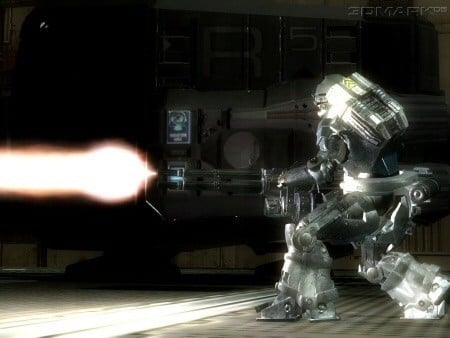
3DMark05 is now the second latest version in the popular 3DMark "Gamers Benchmark" series. It includes a complete set of DX9 benchmarks which tests Shader Model 2.0 and above.
For more information on the 3DMark05 benchmark, we recommend you read our preview here.
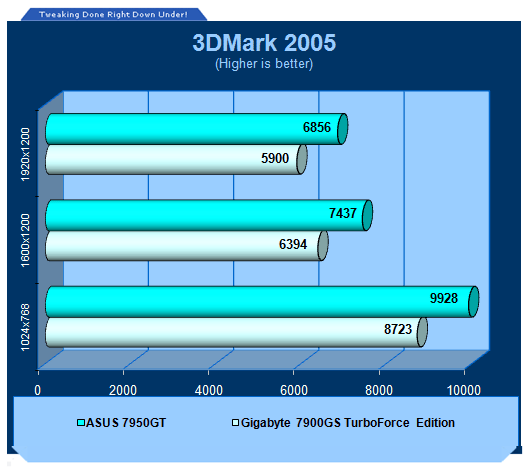
3DMark05 shows us quite a big performance jump when compared to the 7900GS.
Benchmarks - 3DMark06
3DMark06
Version and / or Patch Used: Build 102
Developer Homepage: http://www.futuremark.com
Product Homepage: http://www.futuremark.com/products/3dmark06/
Buy It Here
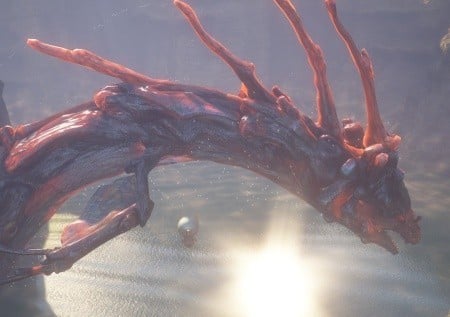
3DMark06 is the very latest version of the "Gamers Benchmark" from FutureMark. The newest version of 3DMark expands on the tests in 3DMark05 by adding graphical effects using Shader Model 3.0 and HDR (High Dynamic Range lighting) which will push even the best DX9 graphics cards to the extremes.
3DMark06 also focuses on not just the GPU but the CPU using the AGEIA PhysX software physics library to effectively test single and Dual Core processors.
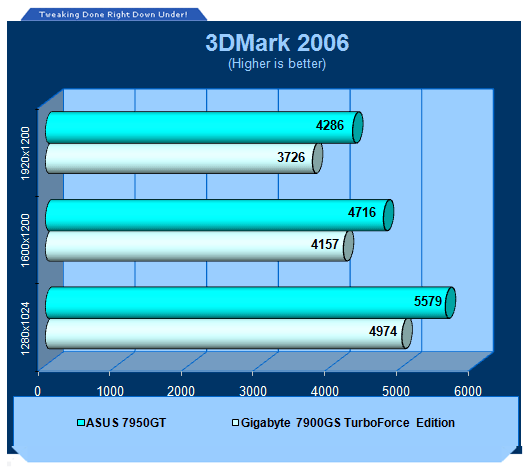
While there is a price increase of roughly 45% on the ASUS GeForce 7950GT, the performance increase we are seeing across the board is much closer to 10%.
Benchmarks - Half Life 2 (Lost Coast)
Half Life 2 (Lost Coast)
Version and / or Patch Used: Unpatched
Timedemo or Level Used: Custom Timedemo
Developer Homepage: http://www.valvesoftware.com
Product Homepage: http://www.half-life2.com
Buy It Here
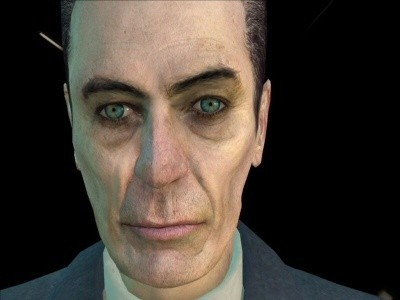
By taking the suspense, challenge and visceral charge of the original, and adding startling new realism, responsiveness and new HDR technology, Half-Life 2 Lost Coast opens the door to a world where the player's presence affects everything around him, from the physical environment to the behaviors even the emotions of both friends and enemies.
We benchmark Half Life 2 Lost Coast with our own custom timedemos as to avoid possible driver optimizations using the "record demo_name" command and loading the timedemo with the "timedemo demo_name" command - For a full list of the commands, click here.
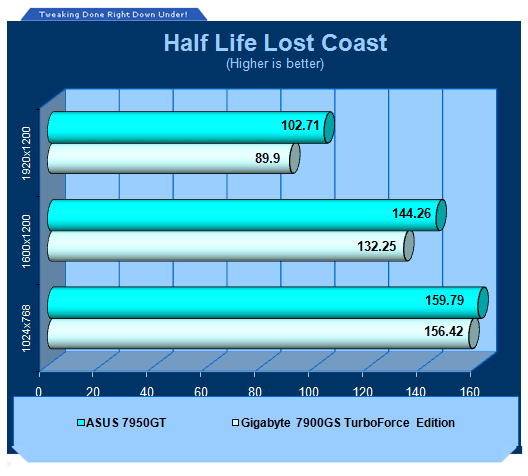
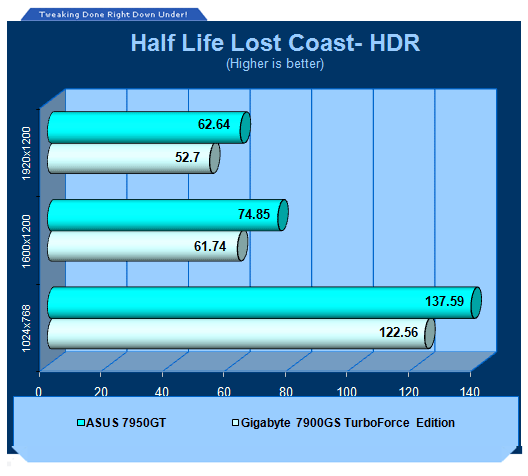
Without HDR enabled, we see that the performance difference between the cards isn't much but as soon as we start placing more load onto the cards, the difference is larger and the percentages start blowing out closer to the 20% mark.
Benchmarks - PREY
PREY
Version and / or Patch Used: Unpatched
Timedemo or Level Used: HardwareOC Custom Benchmark
Developer Homepage: http://www.humanhead.com
Product Homepage: http://www.prey.com
Buy It Here
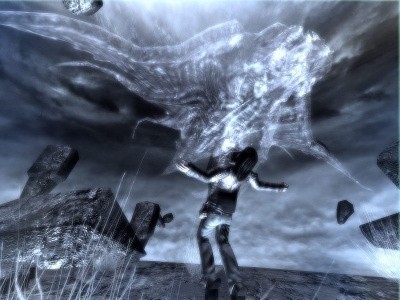
PREY is one of the newest games to be added to our benchmark line-up. It is based off the Doom 3 engine and offers stunning graphics passing what we've seen in Quake 4 and does put quite a lot of strain on our test systems.
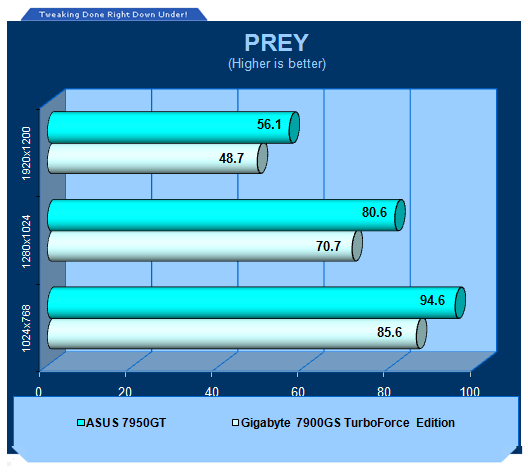
While we see an increase of only around 10%, it's hard to see the value for money in the 7950GT in all honesty.
Benchmarks - F.E.A.R.
F.E.A.R.
Version and / or Patch Used: Unpatched
Timedemo or Level Used: Built-in Test
Developer Homepage: http://www.vugames.com
Product Homepage: http://www.whatisfear.com/us/
Buy It Here
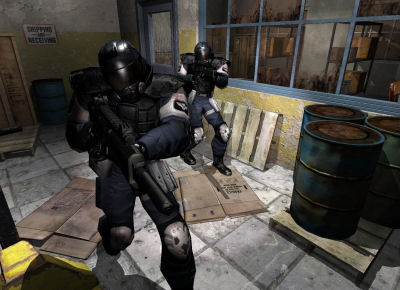
F.E.A.R. (First Encounter Assault Recon) is an intense combat experience with rich atmosphere and a deeply intense paranormal storyline presented entirely in first person. Be the hero in your own spine-tingling epic of action, tension, and terror...and discover the true meaning of F.E.A.R.
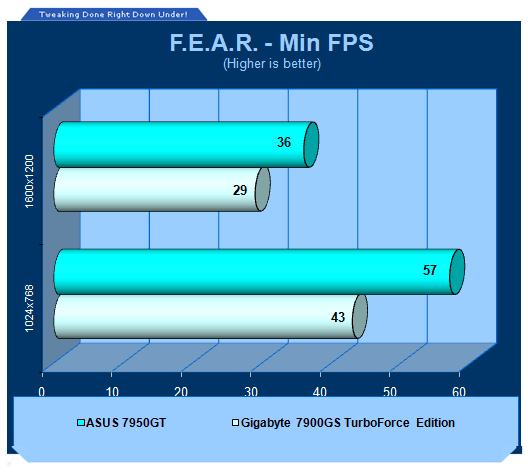
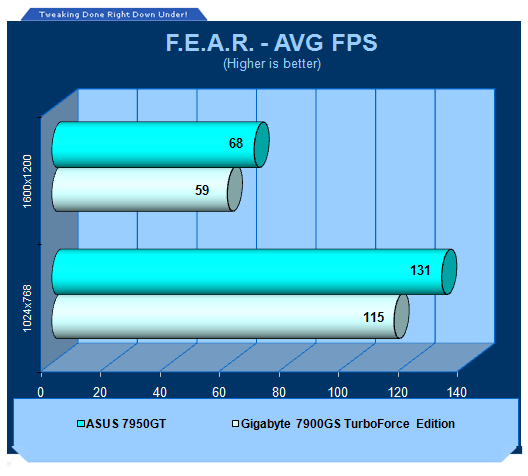
F.E.A.R. is one of the first games that show us a more notable increase, specifically in the minimum frame area. At 1600 x 1200 the 7950GT offers a playable setup while the 7900GS drops below that magical 30FPS mark.
More and more the 7950GT is only looking better in very intensive games and when you turn up all the settings.
Benchmarks - Quake 4
Quake 4
Version and / or Patch Used: 1.2
Timedemo or Level Used: HardwareOC Custom Timedemo
Developer Homepage: http://www.idsoftware.com
Product Homepage: http://www.quake4game.com
Buy It Here
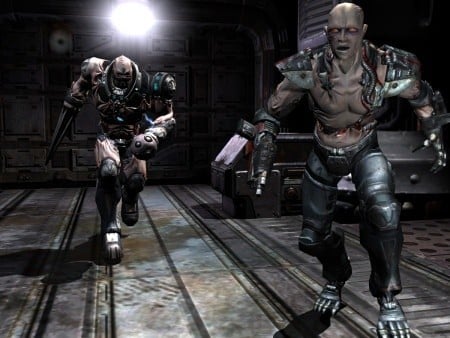
Quake 4 is one of the latest new games to be added to our benchmark suite. It is based off the popular Doom 3 engine and as a result uses many of the features seen in Doom. However, Quake 4 graphics are more intensive than Doom 3 and should put more strain on different parts of the system.
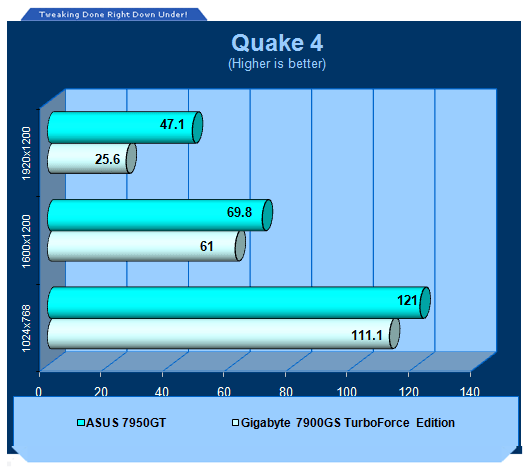
It isn't till we really crank up the resolution that we see the more expensive card separate itself from the cheaper 7900GS.
Benchmarks - Company of Heroes
Company of Heroes
Version and / or Patch Used: Demo
Timedemo or Level Used: Built-in Test
Developer Homepage: http://www.relic.com
Product Homepage: http://www.companyofheroesgame.com
Buy It Here
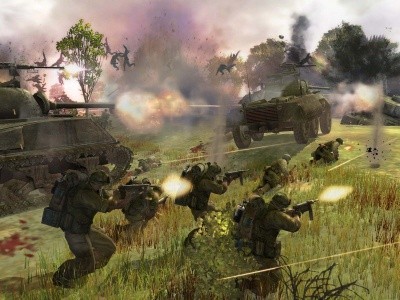
Company of Heroes, or COH as we're calling it, is one of the latest World War II games to be released and also one of the newest in our lineup of benchmarks. It is a super realistic real-time strategy (RTS) with plenty of cinematic detail and great effects. Because of its detail, it will help stress out even the most impressive computer systems with the best graphics cards - especially when you turn up all the detail. We use the built-in test to measure the frame rates.
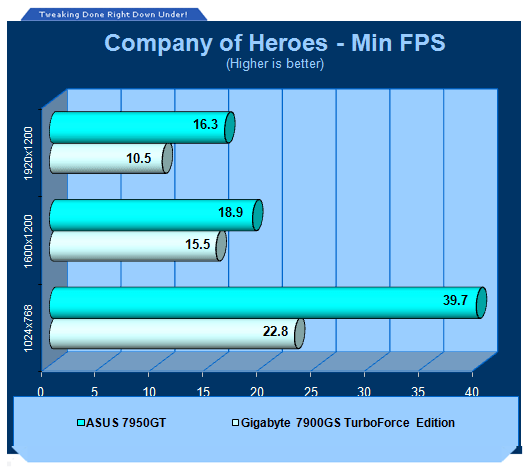
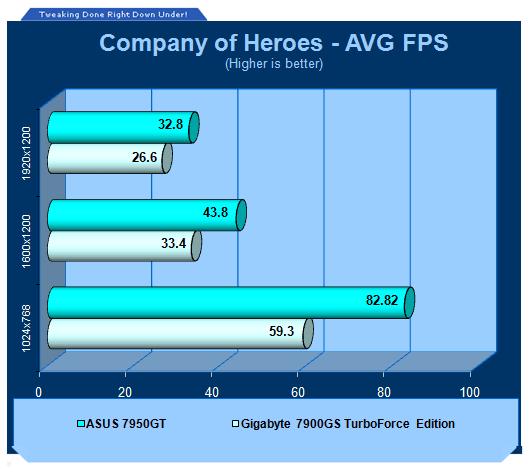
The results from COH show that at these intensive settings you're not going to be playing with the 7900GS. The 7950GT only manages to scrape through at 1024 x 768 with it being too slow at other resolutions, under the 60FPS mark.
Benchmarks - High Quality AA and AF
High Quality AA and AF
Our high quality tests let us separate the men from the boys and the ladies from the girls. If the cards weren't struggling before they will start to now.
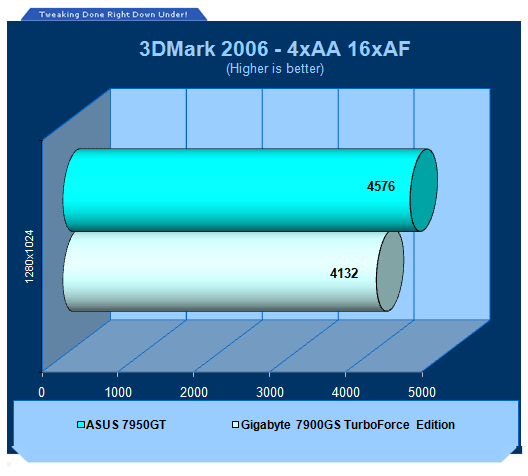
Percentage wise again we are at the 10% area with these high quality settings.
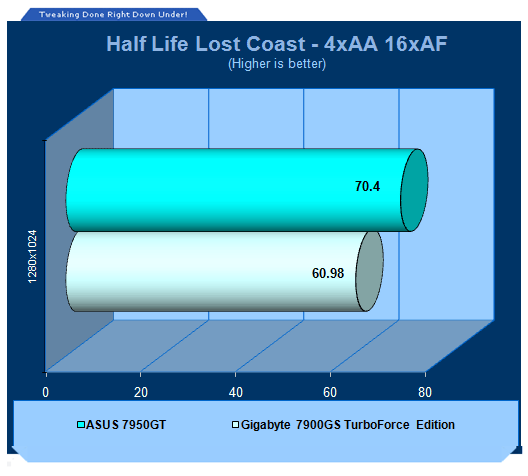
Even with all the load on the cards, we only see a difference of less than 10FPS which equates to roughly 16% performance increase.
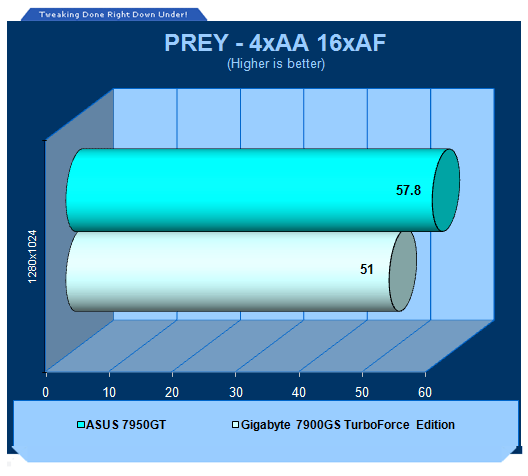
We see again with AA and AF enabled the performance on offer from the 7950GT isn't enough to really "wow" us.
Benchmarks - Overclocking
Overclocking
Using ATI Tool it was time to see what the ASUS GeForce 7950 was capable of doing when it came to overclocking.
With a default core and memory speed of 550MHz and 1400MHz DDR on the ASUS 7950GT, we got a nice bump on the core to 614MHz and the memory jumped to 1640MHz DDR.
Have a quick look at the review we did on the XFX 7950GT we could only achieve a maximum speed of 570MHz on the core and 1460MHz DDR on the memory. It would seem that the move to silent cooling on XFXs part has hindered the overclock quite severely but that comes with the inclusion of quieter computing.
Let's see what our overclock equates to in the benchmark numbers.
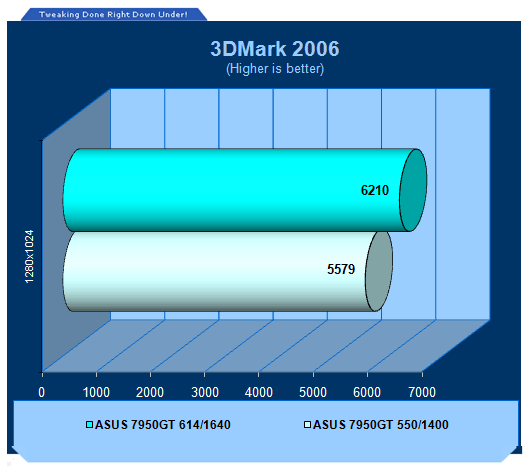
While the overclock isn't super high, in 3DMark06 we can clearly see it helping with a nice bump in overall score.
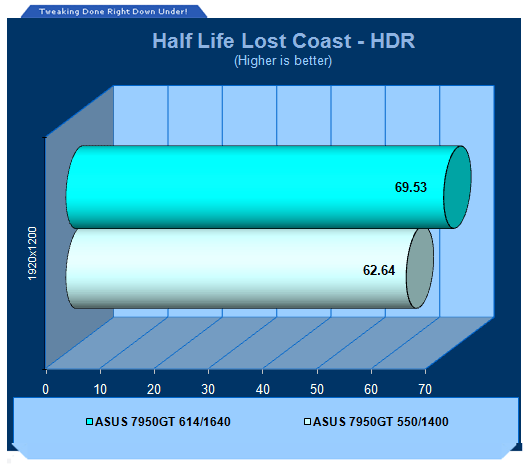
Lost Coast paints a similar picture with it again seeing a nice bump in performance.
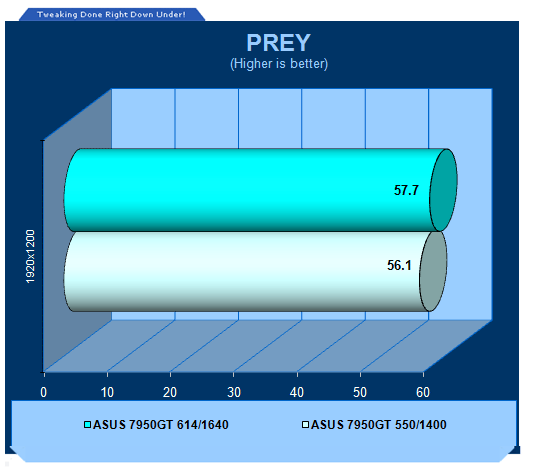
Finally we leave on PREY which actually doesn't see any real advantage with the overclock.
Final Thoughts
XFX's GeForce 7950GT left somewhat of a bad taste in our mouths when we tested it. This was mainly due to the fact that only a few days before we tested a card that was $100 cheaper and when overclocked offer a huge performance increase. While the ASUS 7950GT is better thanks to the active cooling, it still isn't exactly jaw dropping performance when you consider the money spent.
You throw this in with this massive unnecessary box, reference design and large price tag, it all in all doesn't look that attractive to us. It's slower than a 7900GTX and doesn't overclock like a 7900GS. The thing is if you do a bit of smart shopping and hunt around the local second hand forums, you could probably pick up a 7900GTX for a similar price if not cheaper which will offer better performance out of the box and even more again when you start overclocking.
nVidia's GeForce 7950GT is not a bad product but it's just not all that good. nVidia clearly had to fill a void but with the price difference between it and the 8800GTS (which is the next step up) we have to see something soon to fill this gap, not only in price but performance. If you have the kind of money that can buy a GeForce 7950GT and you insist on the nVidia brand, we would recommend that you look around and see if you can snag a second hand 7900GTX on the cheap. Or buy a 7900GS instead and overclock the buggery out of it while in turn saving some money. Or just simply have some patience and hold on for another pay check or two and jump on the GeForce 8800 bandwagon.
ASUS GeForce 7950GT is clearly better when you start getting up to 1600 x 1200 and above but with the OC on offer from the mighty and more affordable GeForce 7900GS and what you could pick up a second hand 7900GTX for, there is just simply better value options to find when you talk about performance. It comes with plenty of features including HDCP support, a couple Dual Link DVI ports and HDTV output using component cable but when someone is buying a graphics card like this, they'll mostly only be considering 3D performance.
- Pros
Faster than both the 7900GS and X1950PRO
HDCP compliant for future HD-DVD and so on
A couple Dual Link DVI ports and HD TV-Out
512MB of memory helps
Comes with full version game
Free CD wallet
- Cons
Overclocking not all that exciting
Money better spent elsewhere
Cooler a little loud in 3D mode
- Latest Pricing
Rating - 7 out of 10

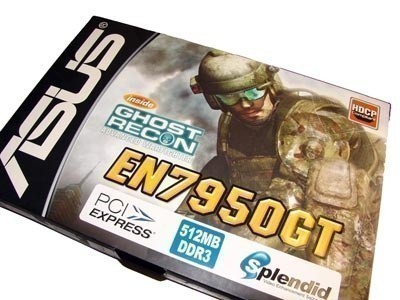
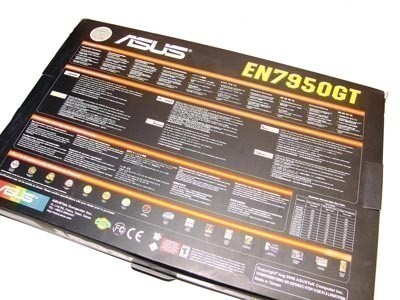
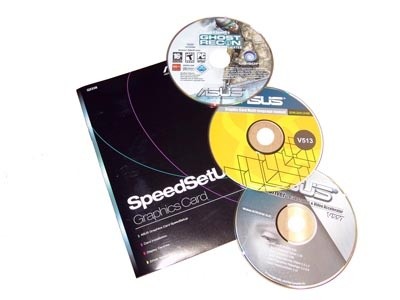
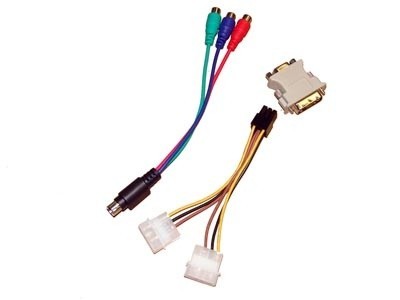
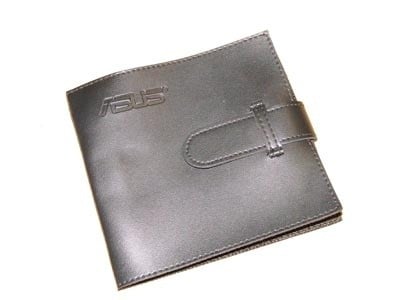
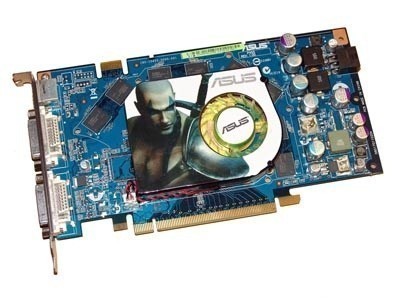
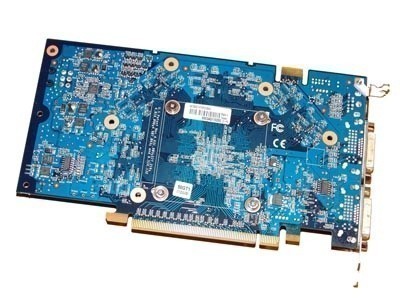
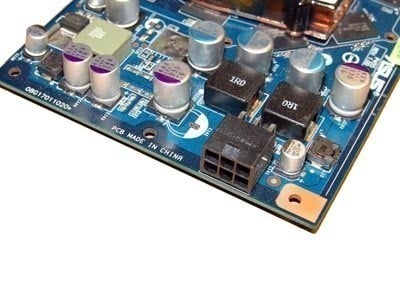
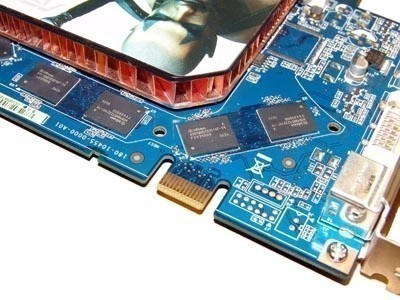
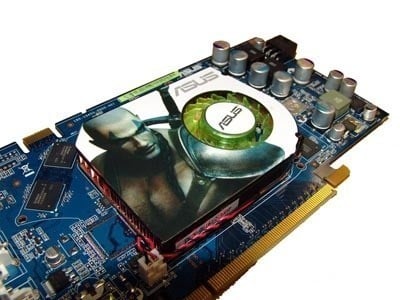
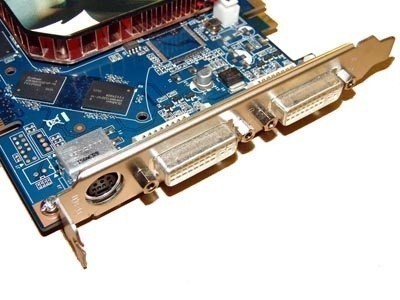
 United
States: Find other tech and computer products like this
over at
United
States: Find other tech and computer products like this
over at  United
Kingdom: Find other tech and computer products like this
over at
United
Kingdom: Find other tech and computer products like this
over at  Australia:
Find other tech and computer products like this over at
Australia:
Find other tech and computer products like this over at  Canada:
Find other tech and computer products like this over at
Canada:
Find other tech and computer products like this over at  Deutschland:
Finde andere Technik- und Computerprodukte wie dieses auf
Deutschland:
Finde andere Technik- und Computerprodukte wie dieses auf